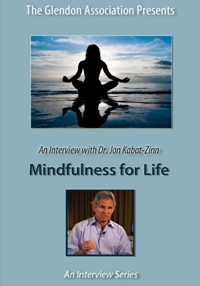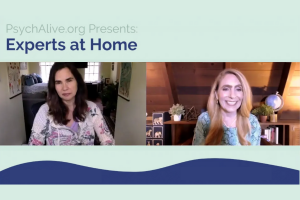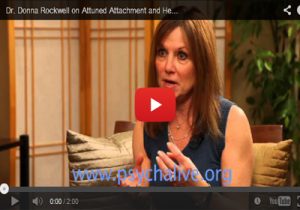Mindfulness – Challenging the Negative Self-Image
Watch and read our exclusive interview with Jon Kabat-Zinn.
A lot of us are caught in the story of ourselves. And that story is often, as you’re saying, very, very negative. And, uh, we don’t have to fix that. All we need to do is acknowledge it, recognize it and then ask ourselves the question, “Is my awareness of my generating this great story of me, is my awareness actually caught in the story? Does it even believe the story?” In the same way as, if you’re anxious, you could ask, “Is my awareness of anxiety, if I make the gesture of embrace in turning towards, is my awareness of my pain in pain? Is my awareness of my fear frightened? Is my awareness of my aversion feeling at all aversive? Or my grasping, is my awareness of my grasping and clinging to my own small minded ideas about myself or others, is it actually caught in that?” And the answer will invariably be, “No.”
But when do we learn to ever inhabit this domain of being? So, I often speak about mindfulness as taking up residency in awareness itself. And what awareness itself is, is it’s a kind of non-conceptual – it includes concepts, but it’s bigger than that — and non-conceptual knowing. And then being the knowing that awareness already is. So you don’t have to get anything. This is already you. So there’s no place to go. There’s nothing to do and there’s no special mindful or other state that you need to attain to become a whole person. You couldn’t not be a whole person. If you were missing an arm and a leg and a breast, you would still be a whole person. Yes – would you have a lot of rehabilitating to do, not just in terms of your relationship to the body or, you know, sort of, whatever but also to the mind and the grief of loss of body parts? Yes, there would have to be a rehabilitation, sort of, trajectory.
But the word “rehabilitation” from the French “habite” means to learn to live inside again. So that’s something that all of us need to learn because we’ve drifted so far from feeling comfortable in our own skin even if we haven’t lost an arm, a leg, a breast or something else. Even if we haven’t experienced grief from the loss of people we love, we’ve drifted so far from being comfortable in our own skin, from being capable of dealing with the stress, pain and illness that confronts us. Or for that matter, appreciating the joy that reeling ourselves back in is valuable.
Order the Full DVD Interview:
 Mindfulness for Life: An Interview with Jon Kabat-Zinn
Mindfulness for Life: An Interview with Jon Kabat-Zinn
In this DVD, Dr. Jon Kabat-Zinn defines mindfulness as a way of “connecting to your life.” He discusses the “hard work” of living in the present moment, the personal and psychological impacts of developing a practice of mindfulness, and the benefits of utilizing mindfulness in therapy. He also touches upon mindfulness in parenting. Drawing upon his years of experience and research in the field of mindfulness, Dr. Kabat-Zinn offers an inspiring and instructive approach for mental health professionals and curious individuals alike.
Tags: grief, jon kabat-zinn, loss, mindfulness, mindfulness meditation, negative self-image, rehabilitation, self-esteem, self-image










Leave a Reply
You must be logged in to post a comment.